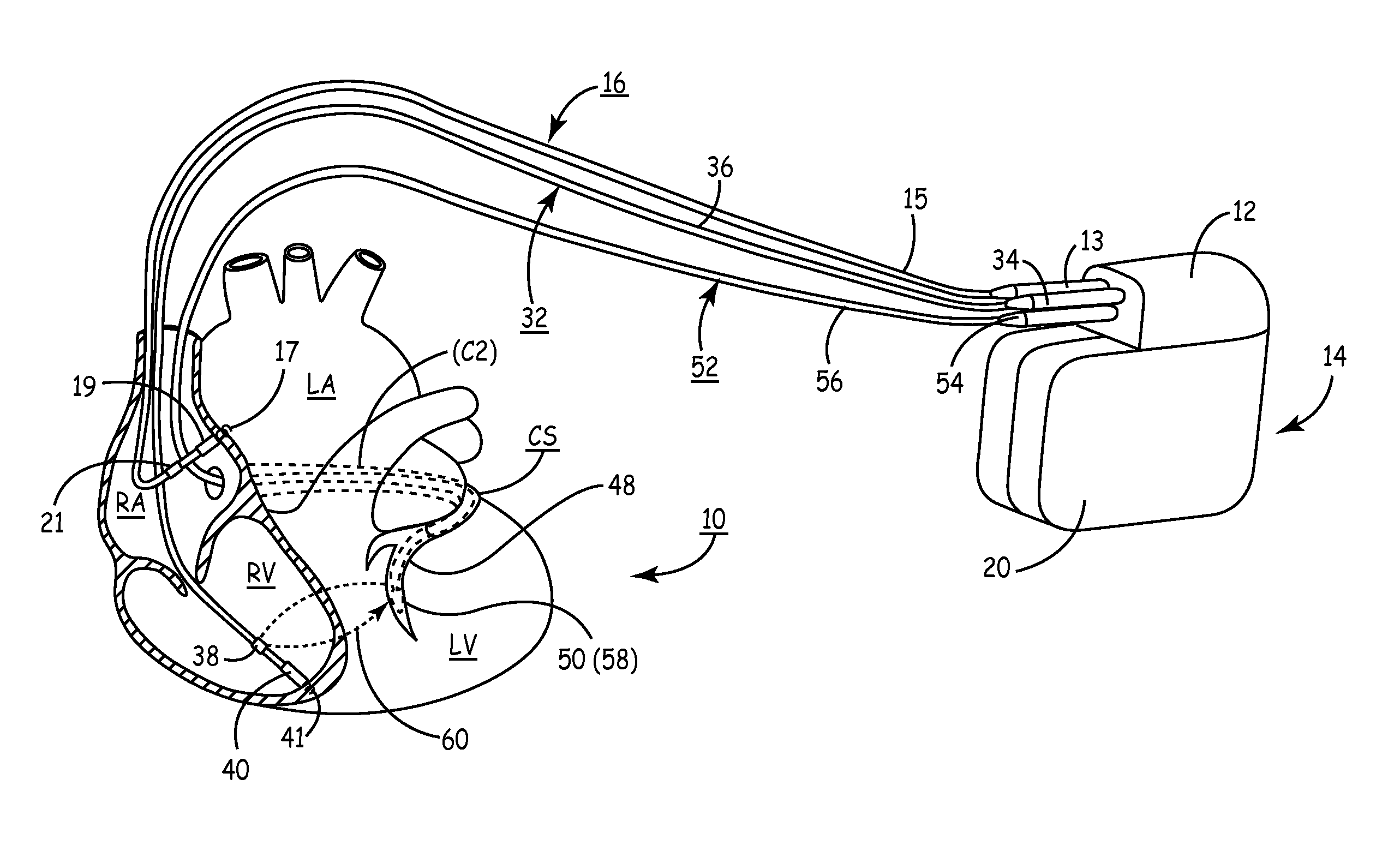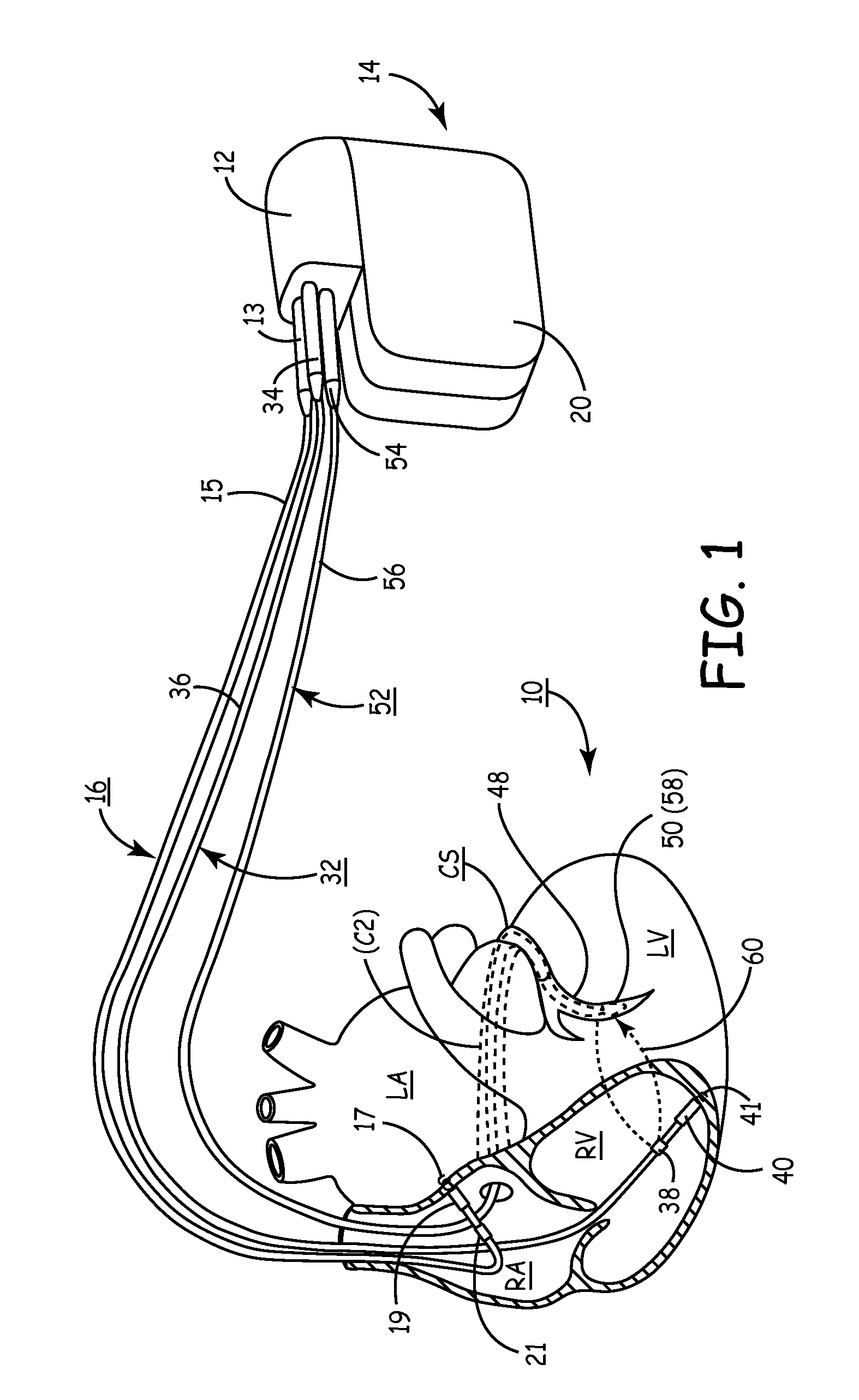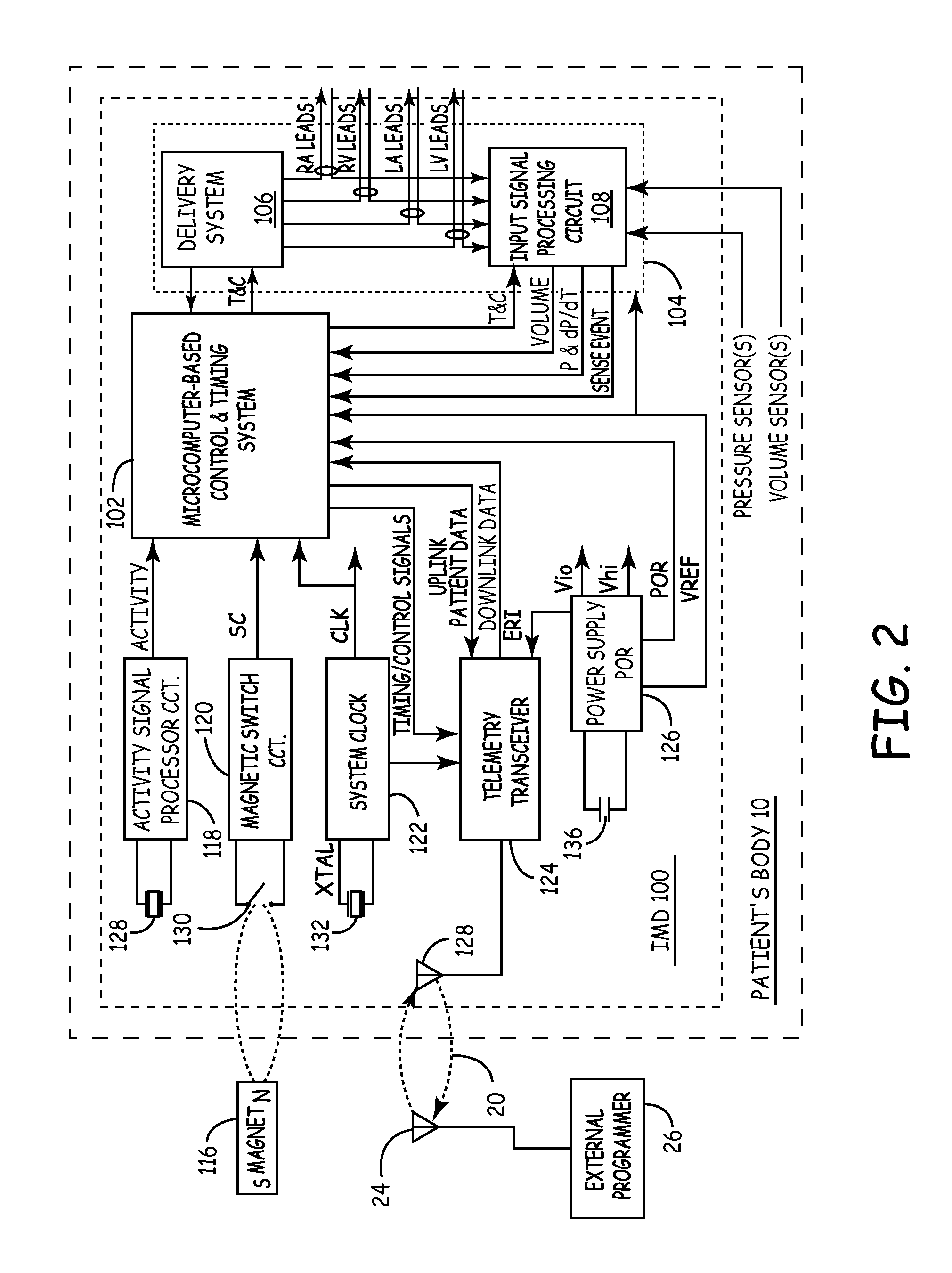Implantable medical device for cardiac electrical stimulation
a technology of electrical stimulation and medical devices, applied in the field of implantable medical devices, can solve problems such as triggering a tachyarrhythmia in the patient's heart that was susceptible, and achieve the effects of reducing the rate or blood pressure, reducing the ventricular rate, and reducing the systolic and diastolic blood pressur
- Summary
- Abstract
- Description
- Claims
- Application Information
AI Technical Summary
Benefits of technology
Problems solved by technology
Method used
Image
Examples
first embodiment
[0021]FIG. 1 depicts an implanted, multi-channel cardiac pacemaker according to the present invention for restoring AV synchronous contractions of the atrial and ventricular chambers and simultaneous or sequential pacing of the right and left ventricles. The pacemaker IPG 14 is implanted subcutaneously in a patient's body between the skin and the ribs. Three endocardial leads 16, 32 and 52 connect the IPG 14 with the RA, the RV and the LV, respectively. Each lead has at least one electrical conductor and pace / sense electrode, and a remote indifferent can electrode 20 is formed as part of the outer surface of the housing of the IPG 14. As described further below, the pace / sense electrodes and the remote indifferent can electrode 20 (IND_CAN electrode) can be selectively employed to provide a number of unipolar and bipolar pace / sense electrode combinations for pacing and sensing functions. The depicted positions in or about the right and left heart chambers are also merely exemplary. ...
second embodiment
[0045]FIG. 4 is a functional flowchart illustrating the operation of a pacemaker practicing the present invention, in this case responsive to a sensed inappropriately high blood pressure. The operation of the pacemaker to provide the therapy is similarly controlled by the microprocessor responsive to software stored in memory, comprising instructions for causing the pacemaker to perform the described functions. The pacemaker checks at 402 to determine whether the blood pressure is elevated, e.g. by determining the pressure is above a defined threshold. Alternatively or additionally, the pacemaker may cross check the present pressure at 404 with a physiological sensor such as an activity sensor to determine whether the blood pressure is appropriate. If the blood pressure is determined to be excessive stimulation therapy according to the present invention is initiated at 406. The therapy is continued until either the blood pressure drops below a defined threshold at 408 (optionally al...
PUM
 Login to View More
Login to View More Abstract
Description
Claims
Application Information
 Login to View More
Login to View More - R&D
- Intellectual Property
- Life Sciences
- Materials
- Tech Scout
- Unparalleled Data Quality
- Higher Quality Content
- 60% Fewer Hallucinations
Browse by: Latest US Patents, China's latest patents, Technical Efficacy Thesaurus, Application Domain, Technology Topic, Popular Technical Reports.
© 2025 PatSnap. All rights reserved.Legal|Privacy policy|Modern Slavery Act Transparency Statement|Sitemap|About US| Contact US: help@patsnap.com



